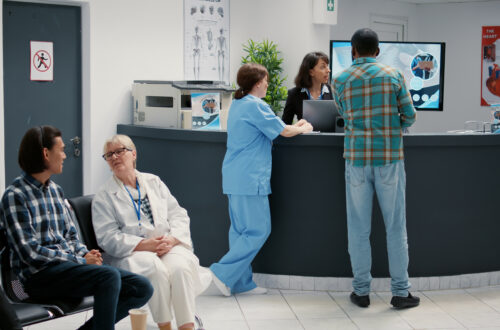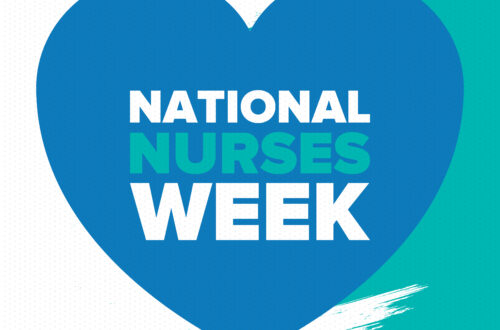
Public Health Officers Have Vital Role Protecting Health

November 20th was National Public Health Day. Prior to January 2020, I suspect the average person had nary a clue as to what a public health officer (PHO) did on a regular basis. They were hailed by some as heroes and demonized by others for their actions. One of my emergency medicine (EM) colleagues on Facebook shared the story of people burning an effigy of the local PHO. Angry residents followed the officer as she dropped off her children at school, targeting them as well.
This article noted that 1499 harassment experiences were reported by public health survey respondents from March 2020 to January 2021 . The exodus of public health officers appears to have started earlier in 2017 with over half of all employees in public health agencies at the local and state level expecting to resign or retire by the end of 2023. This article also predicts a projected loss of 129,000 workers per year for the next two years.
Why should I care about this exodus?
Public health officers play a vital role in protecting the health of the public. They work to prevent and control diseases, promote healthy behaviors, and ensure access to quality healthcare.
During the 1918-1919 Spanish flu pandemic, PHOs were on the front lines of the fight against the disease. They worked to educate the public about the virus, provide care for the sick, and track the disease’s spread. Their efforts helped to save countless lives.
Here are some of their specific roles during the Spanish flu pandemic. Public health officers:
- Educated the public about the virus and how to prevent its spread.
- Provided care for the sick, including setting up quarantines and providing medical treatment.
- Tracked the spread of the disease, which helped to identify areas that were most at risk and allowed for targeted interventions.
- Worked to improve sanitation and hygiene, which helped to reduce the spread of the virus.
- Advocated for policies that would help to protect the health of the public, such as social distancing and mask mandates.
The work of public health officers during the Spanish flu pandemic was essential to the fight against the disease. You can see the stark difference in approach in this History Channel special comparing the St. Louis response and the Philadelphia response to the flu.
Now compare the Spanish flu pandemic response with the COVID pandemic as the public received mixed messages about methods of diagnosis, prevention and treatments. Michael Lewis’ book The Premonition points out many of these challenges describing the actions of an interesting cadre of characters.

Get local!
One point to make is that public health needs are best determined by local officers who have a critical understanding of epidemiology and human behavior. (Epidemiology is the study of the determinants, occurrence, and distribution of health and disease in a defined population.) Public health efforts in New York City are quite different from those in Albert Lea, Minnesota. A clear understanding of influences on public health compliance is also very important. What may work on the east coast, may not work in the Midwest or South.
What does a public health officer do?
A public Health Officer’s roles and responsibilities vary from state to state and city to city. They may: record all births and deaths, inspect restaurants, investigate infectious disease outbreaks, manage chronic diseases or ensure the safety of the water supply in your community. The Centers for Disease Control and Prevention (CDC) provides a framework for local communities called the National Public Health Standards. This lists 10 essential functions that a public health department should manage:
- Assess and monitor population health status, factors that influence health, and community needs and assets
- Investigate, diagnose, and address health problems and hazards affecting the population
- Communicate effectively to inform and educate people about health, factors that influence it, and how to improve it
- Strengthen, support, and mobilize communities and partnerships to improve health
- Create, champion, and implement policies, plans, and laws that impact health
- Utilize legal and regulatory actions designed to improve and protect the public’s health
- Assure an effective system that enables equitable access to the individual services and care needed to be healthy
- Build and support a diverse and skilled public health workforce
- Improve and innovate public health functions through ongoing evaluation, research, and continuous quality improvement
- Build and maintain a strong organizational infrastructure for public health
When the cat’s away, the virus will play!
If we don’t havefully staffed public health department, infectious disease rates may increase as the local and state populations receive little to no information on local outbreaks of diseases like COVID, HIV, measles, or norovirus. And who knows what may happen to the quality of your eating establishments and local drinking water?
What does it take to be a public health officer?
Interestingly, the requirements to be a public health officer in the United States are not standardized. Some areas in the U.S. require an undergraduate degree in the sciences and other counties may have more rigorous standards, such as a medical degree or a masters in public health – or both! In some areas of the United States, public health officers could be a business major who has an MBA and previously ran a health maintenance organization. To apply for a public health officer position in the Air Force, you must have a doctorate in veterinary medicine (DVM) or a masters of public health (MPH), and a bachelor’s degree in the sciences. In addition, the Air Force requires completion of a basic health officer course and a contingency preventive medicine course.
Still unsure if this is an area of interest for you? Consider looking into a less expensive certification program to see if epidemiology is your jam before embarking on a 12-year journey through a college degree, medical degree and residency program.
So,as you open up your faucet and drink from the tap, visit a local restaurant and see their health inspection certificate proudly displayed in the front window, or read a birth announcement in your local newspaper, take a moment to thank the public health officer working behind the scenes to keep you safe.
Disclaimer
The information in this blog is provided as an information and educational resource only. It is not to be used or relied upon for diagnostic or treatment purposes.
The blog does not represent or guarantee that its information is applicable to a specific patient’s care or treatment. The educational content in this blog is not to be interpreted as medical advice from any of the authors or contributors. It is not to be used as a substitute for treatment or advice from a practicing physician or other healthcare professional.




